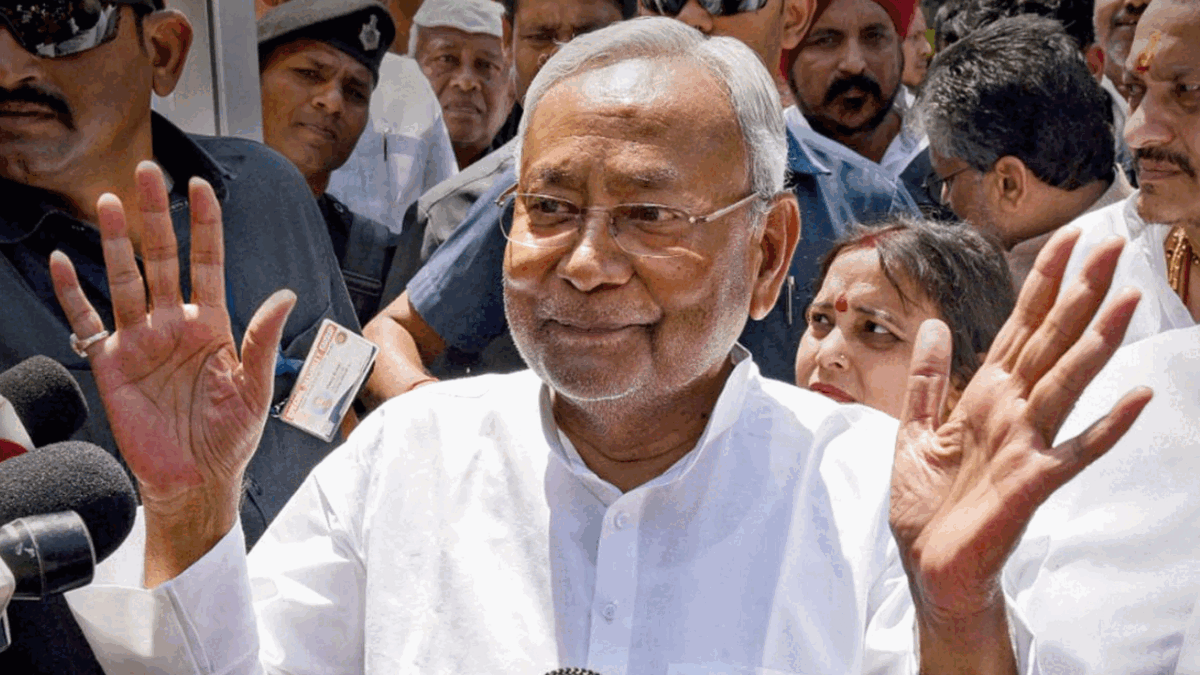[ad_1]
Since a 10% quota for the economically weaker section groups, as announced by the Centre, has also been adopted by the state government, the total quota in Bihar will now amount to 75%.
Bihar caste survey: CM Nitish Kumar says will raise reservation for OBCs from 50% to 65%
As to the validation and implementation of the new quota formula, Bihar chief minister Nitish Kumar said the law required for it would be enacted in the ongoing winter session of the state legislature, which is to conclude on November 10.
TOI had reported in Monday’s edition that the Bihar CM may use the assembly session, convened earlier than usual, to raise the 50% reservation cap in the state to increase quotas for the OBCs.
The caste survey data puts the state in a better position to fend off legal challenges to taking the quota cap beyond 50%.
The new quota fixed for the Scheduled Castes is 20% as their combined population is 19.7% (over 13 crore). The Scheduled Tribes will get 2% reservation, in accordance with their 1.7% population. The backward classes and extremely backward classes will get a 43% job quota as their combined population is 63.1%, as per the survey report.
Amit Shah-Lalan Singh Face Off: Bitter clash over Bihar Caste Survey manipulation
Nitish, by announcing the increase in quotas on the floor of the state assembly on the second day of the five-day winter session, has blunted the political punches that Union home minister Amit Shah threw at him in his November 5 rally. The Bihar BJP has followed the same line since October 2, when the state government first released the caste data.
The old reservation formula, also fixed by the Nitish government in the past, provided a 16% quota for SCs, 1% for STs, 12% for backward classes, 18% for EBCs and 3% for backward class women — a total of 50%. “Since there is already a provision for 35% quota for women of all castes and creed in government jobs and educational institutions, the separate 3% quota for backward class women becomes redundant. Therefore, it has been made a part of the new quota for the backward classes and EBCs,” Nitish said.
The government’s move is backed by the caste-based headcount and ascertainment of the economic status of families across all castes and religions. The Bihar caste survey report mentions 2.76 crore families in the state.
On Tuesday, Nitish also announced a slew of poverty alleviation programmes for poor families, which would require mobilisation of an enormous sum of money — Rs 2.5 lakh crore — and, therefore, would be implemented over the next five years. To offset the burden of the state on that account, Nitish revived his demand that the Centre grant special category status to Bihar.
In view of the extent and incidence of poverty in the state at 34.1% of the total families, as brought out by their economic status in the survey, Nitish also announced poverty alleviation programmes for all caste groups, irrespective of their religion, by way of financial assistance to be provided by the state government.
“If the Centre grants special category status to Bihar, then the benefits that will accrue from it will bring a lot of good to the people of the state,” Nitish added.
While the state has 94 lakh poor people with no assured work and income less than Rs 6,000 a month, the poverty alleviation measures include financial assistance of Rs 2.5 lakh per family to start economic activity, extension of self-help group activities to towns to increase their number to more than 10 lakh with 1.5 crore women members (at present 1.30 crore), and an increase in the loan amount from Rs 1 lakh to Rs 2 lakh.
Nitish also said the thrust given to girls’ school and college education has helped lower the female fertility ratio to 1.6 against the national average of 1.7 in the case of women who are graduates, to 2 in the case of wives educated up to the intermediate level, and to 2.9 in the case of wives holding matriculation degrees. “As the SC, ST, backward classes and EBC girls get educated and their economic condition also improves, their relative populations will also fall,” Nitish said.
Bihar’s new quota formula has set an example for other states, including Maharashtra, which is wracked by the ongoing agitation related to the demand for Maratha reservation.
[ad_2]
Source link


